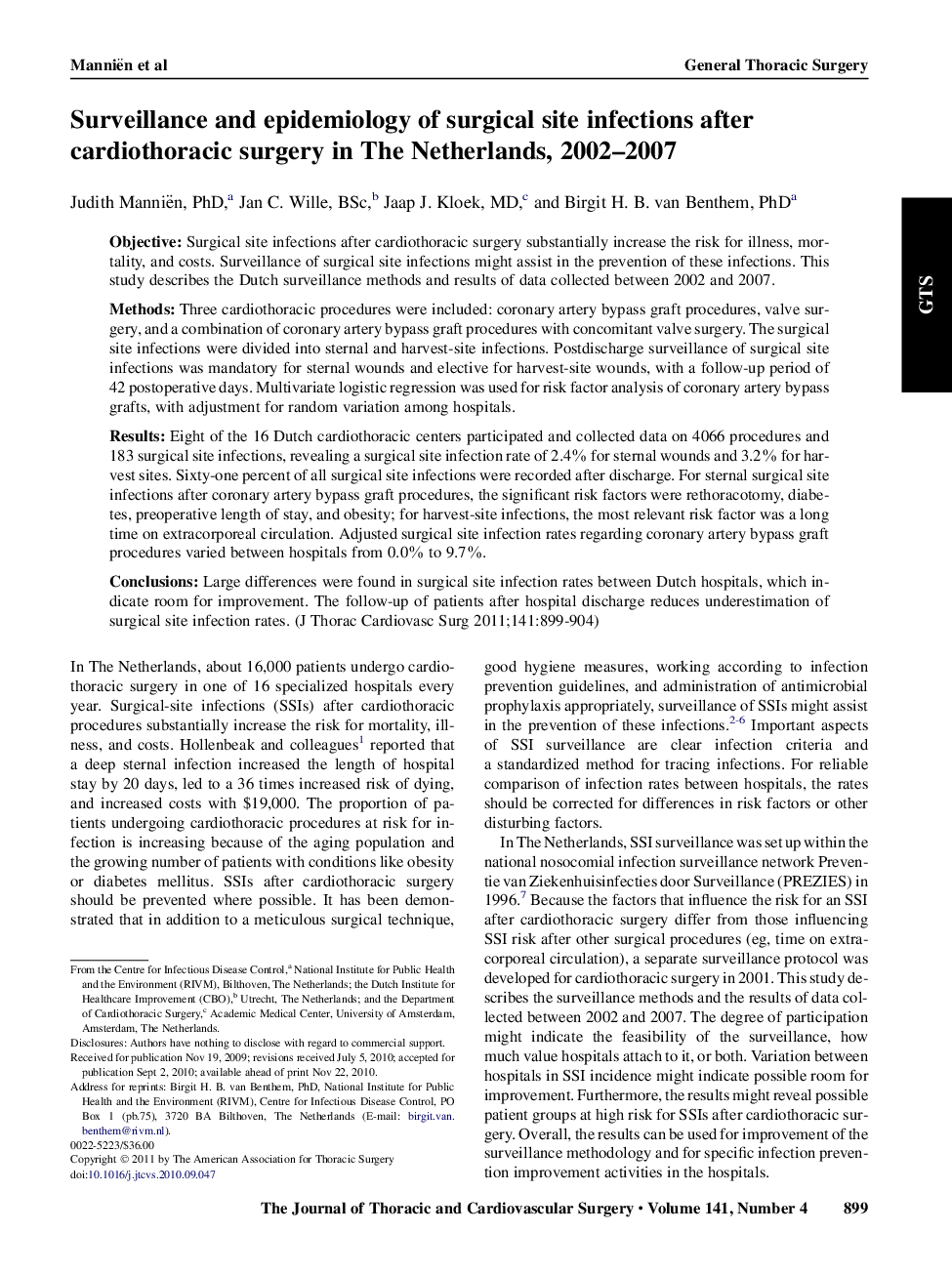| Article ID | Journal | Published Year | Pages | File Type |
|---|---|---|---|---|
| 2982652 | The Journal of Thoracic and Cardiovascular Surgery | 2011 | 6 Pages |
ObjectiveSurgical site infections after cardiothoracic surgery substantially increase the risk for illness, mortality, and costs. Surveillance of surgical site infections might assist in the prevention of these infections. This study describes the Dutch surveillance methods and results of data collected between 2002 and 2007.MethodsThree cardiothoracic procedures were included: coronary artery bypass graft procedures, valve surgery, and a combination of coronary artery bypass graft procedures with concomitant valve surgery. The surgical site infections were divided into sternal and harvest-site infections. Postdischarge surveillance of surgical site infections was mandatory for sternal wounds and elective for harvest-site wounds, with a follow-up period of 42 postoperative days. Multivariate logistic regression was used for risk factor analysis of coronary artery bypass grafts, with adjustment for random variation among hospitals.ResultsEight of the 16 Dutch cardiothoracic centers participated and collected data on 4066 procedures and 183 surgical site infections, revealing a surgical site infection rate of 2.4% for sternal wounds and 3.2% for harvest sites. Sixty-one percent of all surgical site infections were recorded after discharge. For sternal surgical site infections after coronary artery bypass graft procedures, the significant risk factors were rethoracotomy, diabetes, preoperative length of stay, and obesity; for harvest-site infections, the most relevant risk factor was a long time on extracorporeal circulation. Adjusted surgical site infection rates regarding coronary artery bypass graft procedures varied between hospitals from 0.0% to 9.7%.ConclusionsLarge differences were found in surgical site infection rates between Dutch hospitals, which indicate room for improvement. The follow-up of patients after hospital discharge reduces underestimation of surgical site infection rates.
